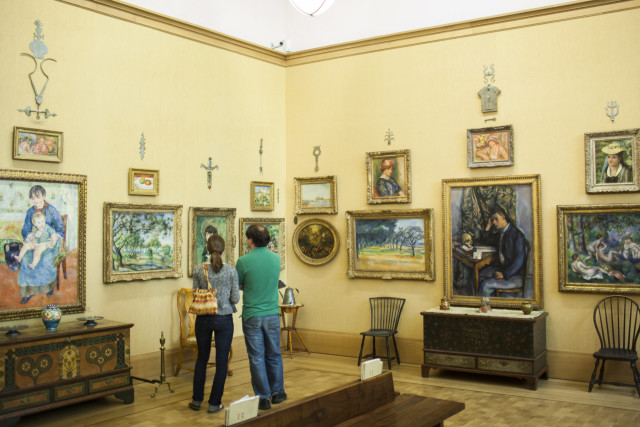
Shelley Bernstein
The Barnes Foundation is about to get a system-wide update. Best known for its collection of Impressionist, Post-impressionist and early modern paintings, the Foundation announced today that Shelley Bernstein will become their Deputy Director for Digital Initiatives and Chief Experience Officer. For 17 years, Bernstein has served as the Brooklyn Museum’s renowned Vice Director of Digital Engagement & Technology. She leaves that post May 16th.
While at the Brooklyn Museum, Bernstein oversaw myriad attention-grabbing shows that required audience participation. These included “Click,” a crowd-sourced exhibition that began with an online open call and ended with an audience evaluation of the artwork submitted, and “Go,” a community-curated open studio project in which audiences visited registered studios and voted on the artists they’d like to see in a show. “Ask”, a more recent mobile project invites visitors to ask questions about works in the museum via their phones, and promises an answer within 45 seconds.
Now, she moves from a museum with permanent and rotating exhibitions—and a reputation for populist shows—to a foundation known for its labelless salon-style hung walls that rarely change.

The Barnes Foundation’s salon-style galleries.
Addressing that new set of problems with technology was a big enough challenge that Bernstein felt compelled to move. “I think when you get to this point in a career when you’ve done a lot of things, I start looking for really big challenges and interesting problems to solve and a place where you can solve things efficiently. The Barnes gave me both of those things.”
Bernstein enthusiastically poured over initial thoughts on how to address this set of challenges. The visitors, she noted, talked more than almost any others she’d seen at institutions, despite there being little wall text. Given that the viewing experience is so dense, she immediately tossed out the idea of scripted audio guide and started thinking of ways to focus the viewer’s attention through apps.
From speaking with Barnes Executive Director and President Thom Collins, that single visit seemed to have illuminated a lot. “It’s not just technology, it’s the people piece” he told me. “She has the ability to draw the goals of museum educators and technologists together.”
And that skill explains why the museum is the first to have created the position of Deputy Director for Digital Initiatives and Chief Experience Officer. Museums need experts who understand both. “So many of my colleagues tell me that they’ll implement a program that involves digital [components], but because they don’t have end-to-end visitor experience fully in mind when the project hits for the floor there are a lot challenges,” said Bernstein. “You might have a project in-house but nothing integrated online. Or you might have a project online, but there’s nothing in-house.”
Indeed. Anyone who’s tried to organize a public event, ever, has probably noticed the seemingly endless set of concerns as they pertain to integrating an online and offline experience. Magnify that by a million and you’ve got the problems of an institution.
And the Barnes is not unaware of this. “Increasingly younger audiences expect that they will be able to have these experiences that are engaged through digital media and expect to learn a la carte.” Collins told me as he spoke of the significance of hiring Bernstein. “We don’t have the option of ignoring this.”


Comments on this entry are closed.